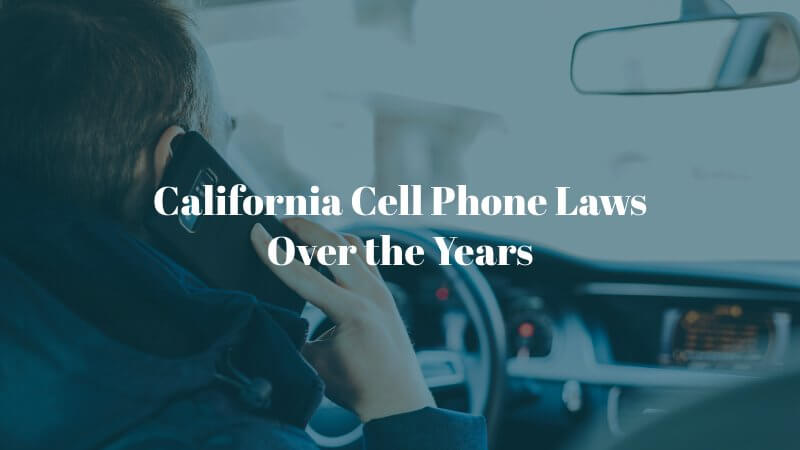Distracted driving remains a leading cause of car accidents in California, despite a series of laws put into place during the past decade to prevent cell phone use behind the wheel. Drivers are 23 times more likely to experience a collision if they text and drive. According to the National Highway Traffic Safety Administration (NHTSA), a vehicle traveling at 55 mph drives the length of a football field in only five seconds—the amount of time a driver’s eyes are off the road while reading an average text message. Because distracted driving accidents have deadly consequences, California’s traffic laws prohibit hands-on texting and driving but allow the use of specific types of technology for those over the age of 18.
If you live and drive in California, it’s important to know the state’s laws regarding cell phone use while driving and rigidly adhere to the laws to avoid penalties, liability, and the possibility of a deadly accident.

California was one of the country’s earliest states to prohibit hands-on cell phone use while driving. The state enacted its first cell phone law in 2008, prohibiting all drivers from making hands-on calls while driving. Drivers with installed technology for making voice calls may use hands-free technology to make phone calls while driving in California as long as they are over 18. Minors under 18 years old may not use cell phone technology behind the wheel at all, not even hands-free calls.
In 2009, California strengthened the state’s law by prohibiting the use of cell phones or tablets for reading, writing, or texting while driving, while still allowing hands-free technology for making phone calls for non-minors.
In 2017, California updated its laws to accommodate the common use of cell phone GPS systems for navigating. The 2017 law allows the use of a cell phone for hands-free technology as long as the phone is secured in a cell phone holder mounted on the dash, center console, or windshield providing it doesn’t impede the driver’s vision. Drivers must use either hands-free technology or single-swipe actions to access GPS, playlists, and other technology. The previous law didn’t specifically prohibit drivers from holding their phones while using voice technology or speaker phones.
In 2021, California added additional penalties for those who receive traffic citations for violating the state’s cell phone laws.
If you are involved an collision, it’s important to speak with our Encino car accident attorneys who are well versed in specific, up to date California traffic laws.
California drivers may only use hands-on cell phone technology for making emergency calls to 911 or emergency medical providers. Cell phone use behind the wheel is a primary infraction for adults in California, meaning a law enforcement officer may pull over an offender even if they’ve committed no other traffic violation if they witness the driver using a phone to call, text, scroll social media or any other hands-on usage. For those under the age of 18, texting while driving is a secondary offense. An officer may only pull over a driver who is speeding or otherwise committing a traffic violation and then issue them a secondary citation for using a cell phone. Fines and penalties for cell phone use while driving in California are as follows:
California Highway Patrol recommends keeping cell phones out of reach while driving to resist temptation. They also urge drivers to avoid other distractions behind the wheel such as eating or grooming while driving.